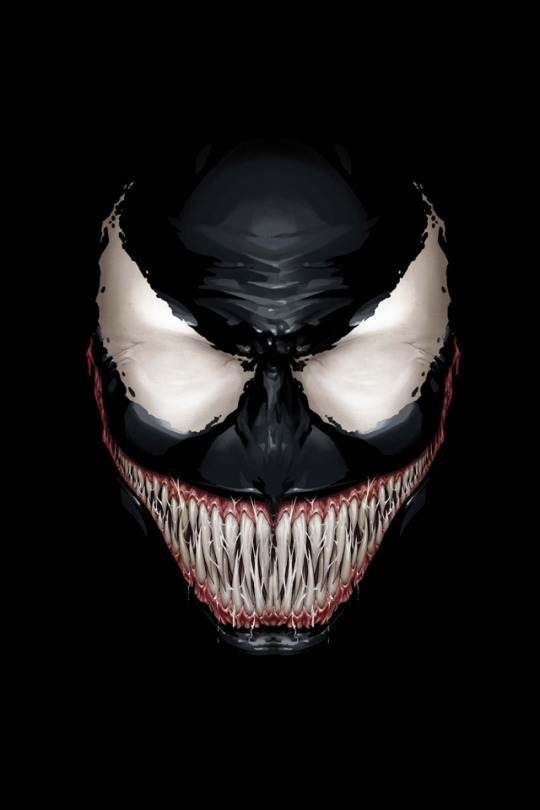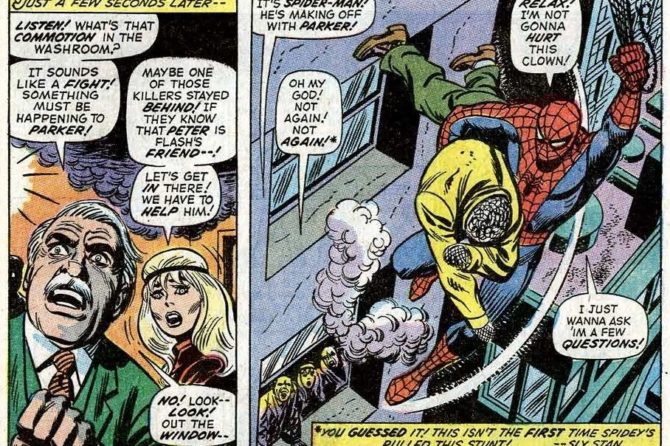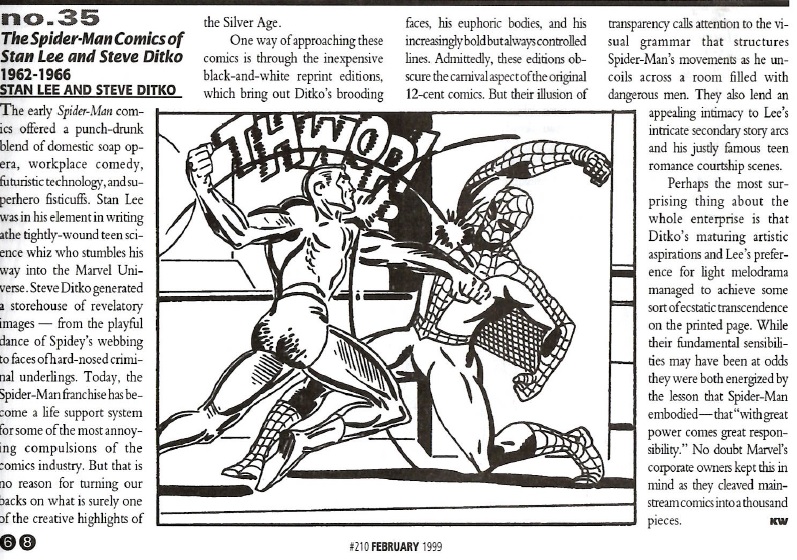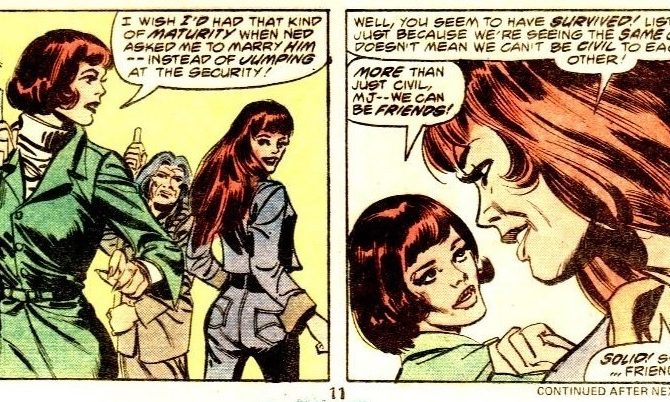In this part we examine the fan expectations for Venom vs. the authorial intentions.

Let’s get down to brass taxes and start tackling the loudest criticisms of Venom; namely Eddie Brock as a character and his motives for hating Spider-Man. The first step to doing this though is to establish the expectations fans had for the character verses the actual intended concept behind him.
In part 1 I listed what I feel are the major criticisms of Venom. As a reminder here are the points that more directly relate to Brock.
· Eddie Brock’s motivations for hating Spider-Man are weak and make no sense
· Brock’s origin story involves rewriting events from the Sin Eater storyline to facilitate his fall from grace
· Brock was a previously unknown character who is unconnected to Peter Parker’s life in or out of his costume.
· The reveal of Brock as Venom, especially in light of previous two points, is a bad resolution to the mystery story seeded in issues leading to ASM #300
· Other versions of the character (such as Spider-Man the Animated Series, Spider-Man 3 and the Spectacular Spider-Man Animated Series) all make Brock to be a much better dark reflection of Spider-Man than the original comic book version
Because they are so interlinked addressing them one-by-one is out the window, we’re going to tackle them a bit more broadly. So don’t worry about remembering them from one instalment to the next; I’ll keep repeating them as necessary.
Anyway to crack on addressing those points, first I will refer you again back to part 1 where I stated that my thesis for defending Venom was that he was more poorly communicated and readers projected unwarranted expectations onto the character.
What were these expectations and where did they come from?
Readers of the Day
Well to begin with we need to appreciate that Venom visually looked a lot like Spider-Man. Or rather how Spider-Man had looked for a few year before ASM #300 given that he’d off and on been wearing the black costume. Furthermore, in ASM #300 Venom also displayed enhanced strength and speed as well as the ability to wall-crawl and generate webbing.
Most of this could be attributed to the symbiote, which had in the past granted other hosts abilities similar to Spider-Man. In Spectacular Spider-Man #99-100 a random civilian is bonded to the civilian granting him an appearance near identical to Spider-Man and the ability to web-swing.


And of course Venom’s primary colour was black, a colour commonly associated with evil in Western cultures.
It is my belief that all these things combined caused readers of the day to expect the new character in possession of the symbiote to be a kind of evil Spider-Man, a dark reflection of the character. This was obviously helped further by Venom’s evil and monstrous appearance.
This expectation coupled with his shadowy build up in ASM #298 and proper introduction in the milestone ASM #300 more than likely heightened reader anticipation for the character to be a big deal. Far bigger I think than if he had debuted in any given issue of Spider-Man that wasn’t a milestone of some kind, especially if it happened in Web of Spider-Man (the youngest and lowest regarded Spider title) as originally intended.
After all, a dark reflection and in particular evil versions of the protagonist is a time honored tradition in fiction, especially in superhero comics. One need only look at the majority of villains from the Marvel Cinematic Universe for proof of this. However it was a trope that Spider-Man had never directly been instigated in during his then 25+ years of publication. Yes there had been the Scorpion, the Spider clone and arguably Doc Ock, but none of them were wholesale built around the central conceit of being ‘evil versions’ of Spider-Man Venom’s visual and abilities seemingly sold him as.
The lack of such an archetype in the series for such a long time might possibly have further enhanced reader anticipation to finally see such a character in the pages of Marvel’s flagship character. And for that type of character to debut in such a momentous issue as ASM #300 meant readers were hyped to say the least.
And of course all that shadowy build up in the preceding two issues surely was intended to hint that whoever had the symbiote had to be someone of significance. An old foe? A friend turned foe perhaps? Or someone who was otherwise somehow connected to Spider-Man. Whoever this mystery man was going to be the unveiling was sure to be a shocker.
Given these expectations it is no wonder that the character on the page proved disappointing to readers of the day. On the face of it, Venom he didn’t seem to deliver on the promise of being a true dark reflection of Spidey beyond the superficial elements of his appearance and powers. And he most certainly failed to fulfil the promise of the mystery surrounding his identity.
After all he turned out to not just be a complete stranger to readers but someone who was simply not particularly connected to Spider-Man (or Peter Parker at all). The unveiling of his identity was apparently a non-event because it was unguessable and held so personal stakes for our hero. Although frustratingly when explanations came they seemed to treat Venom’s identity as a dramatic reveal to the point where some fans believed he was a character of significance they’d just missed or forgotten about in a back issue or two.
His motivations didn’t make things any better as his vendetta against Spider-Man didn’t really add up at face value.
With all this you can understand the disappointment of readers back in 1988.
Adaptations
Furthermore, readers from later generations would have their own set of expectations for the Venom character. To some extent they would be in line with readers of the day if for no other reason than Venom’s powers and visual screams ‘evil Spider-Man’.
However it goes beyond that because for many Spider-Man fans of my generation (I was born in the early 1990s), we learned of Venom from the numerous merchandise he was featured on and more importantly from the 1994 Spider-Man animated series. Among the things the cartoon innovated when it came to Venom was the ideas that the costume brought out the darkside of its host, that Eddie Brock was an established member of Spider-Man’s supporting cast before he became Venom and that he blamed Spider-Man for ruining his life due to a series of misunderstandings or direct altercations with him wherein Brock brought misfortune upon himself. For example Spider-Man in the first episode prevented Brock from revealing Curt Connors was the Lizard in order to prevent the Connors’ family having their lives ruined and later he’d reveal that Brock, in a bid to regain Jameson’s favour, had framed him for a crime he didn’t commit. That coupled with some bad luck conspired to provide Brock with a slow burn character arc that gifted him some entirely understandable and obvious motivations for vengeance against Spidey.
This version of Venom was so impactful and definitive for many people, that elements from it were featured in consequent adaptations (including Spider-Man 3 and the Spectacular Spider-Man TV show) and various comic renditions of the character (e.g. Ultimate Spider-Man).
In fact the 1994 cartoon version made such a potent impression that there are long time Spider-Man fans who were around during the original debut of the black costume who nevertheless have believed that those original comics contained elements from the 90s cartoon’s take on the symbiote. Chiefly, the notion of the costume as a corrupting influence on Spider-Man.
For those fans and the ones of consequent generations Venom is on the Mount Rushmore of Spider-Man characters and villains, definitively standing alongside Green Goblin and Doc Ock as the A-listers of Spider-Man’s rogue’s gallery.
Consequently there was a large demand and expectation for Venom’s inclusion in various later adaptations of Spider-Man, with frequent requests for Brian Michael Bendis to do his take upon the character in Ultimate Spider-Man.
However what was rather different in many of these later adaptations is that, unlike the character’s debut in the 1994 cartoon, they tended to play Eddie Brock as something of a dark reflection of Peter Parker. That is to say it wasn’t just that Brock was the alter ego of someone who looked like an evil Spider-Man and possessed similar powers to him. Brock himself was a dark reflection of Peter and his civilian life.
In the Ultimate Spider-Man comic and the Spectacular Spider-Man Animated Series, Peter and Eddie were childhood friends close in age (the gap being larger between their comic counterparts) who’s fathers worked together and died in the same plane accident, both later following in their footsteps by becoming science students themselves.
In USM Peter was presented as a pretty nice (albeit at times surly) 15 year old kid. In the arc debuting Brock/Venom. Peter is also shown to still be very much in love with his recent ex-girlfriend Mary Jane Watson. In contrast Brock was presented as a college aged creep who tried to take advantage of the underage high schooler Gwen Stacy (who’d recently lost her father) and derided her as a ‘tease’.



In this version of the story, the alien costume is actually a lab created ‘suit’ Peter and Eddie’s fathers were working on, based upon Richard Parker’s DNA. When Peter wears the suit it mostly works fine but affects his emotions and transforms him into a monster resembling Venom.
Ultimate Brock’s motivations for villainy boiled down to a combination of several factors. His roommate’s derision of him, being rejected by Gwen, the discovery that Peter had taken a sample of ‘the suit’, Peter making him feel powerless in the face of his spider powers and his confiscation of ‘the suit’.
When Brock tried to use ‘the suit’ himself, partially due to it not being based upon his DNA and partially due to his own mind and emotions, he becomes an even worse monster with even less control than Peter had.
Because ‘the suit’ was based upon Richard Parker’s DNA, as Venom (along with all his other motivations) compelled to violently seek out Peter.



Meanwhile in the Spec cartoon a stark difference is drawn between the 16 year old Peter and 18 year old Eddie through their different circumstances and reactions to their parents’ deaths.
Following the deaths of his parents Eddie was raised alone and became somewhat ‘in love’ with death, developing a reckless streak wherein he’d try attacking the Lizard or drive his motorcycle like a maniac. Brock’s loneliness growing up further fuels his relationship with the symbiote as he finally has a means to never be alone again.

However following Richard and Mary Parker’s deaths Peter emerged with a profound appreciation for life, in no small part because he was raised in the loving environment provided by Aunt May and Uncle Ben.
Across the first season of the show Eddie gradually grows a grudge against his old childhood friend. It starts when Peter takes a picture of the Lizard to make money from the Bugle, seemingly abandoning efforts to help cure Doctor Connors to do so (obviously he was actually trying to stop him as Spider-Man). As the season progresses Brock believes Peter to be selfish not only taking his sickly aunt and devoted friend Gwen for granted, but also apparently prioritizing his financial prospects regarding Spider-Man over his loyalty to Brock himself and other people.
Things come to a head when Spider-Man seemingly steals the symbiote from the lab Eddie is working at, thus losing them funding and causing Eddie to lose his job. Brock holds some animosity towards Peter over this due to his connection to Spider-Man but also develops a grudge for Spider-Man. When Spidey seemingly returns the symbiote only to (in spite of Eddie’ protests) seemingly destroy it Brock equates Spider-Man and Peter as being as bad as one another and it is at this point he bonds with the symbiote and becomes Venom.
In the 2007 film, Spider-Man 3, Eddie Brock was a Bugle photographer like Peter Parker and, like USM and Spec cartoon, was around his age, possibly even closer than in those other two renditions. His similarities to Peter went further though as he too was looking to make a career as a staff photographer and hoped to do so through capturing Spider-Man action photos. He also loved the beautiful Gwen Stacy from afar, which was not dissimilar to Peter’s feelings for Mary Jane in the previous two films. The key difference though was that Brock believed there was something deeper between him and Gwen (who didn’t reciprocate his feelings) and tried to follow up on that belief in a creepy manner.

In contrast Peter and MJ shared a more genuine and reciprocated connection with a lot of the conflict in their relationship stemming from Peter’s attempts to not pursue his feelings out of concern for MJ’s safety.
Spider-Man 3’s version of Brock began his descent into darkness when the black clad Spider-Man broke his camera, thus ruining his chance to get a photo to win him the Bugle staff job. In response he faked a photo prompting the symbiote influenced Peter Parker to roughly humiliate him in front of the Bugle staff and get him fired. Insult was added to injury when Peter took Gwen out on a date, with her clearly preferring him to Brock.
With all these portrayals in mind and his impact/legacy within the franchise as a whole, many fans going back to check out the character’s true beginnings in the comics have been unpleasantly surprised to find Venom and his origin a far cry from what they knew or expected.
I think for fans of later generations (i.e. ones picking up the comics post-1988) this plays a very major role in the derision Venom’s origin story (and by extension the character) has within the fandom. Essentially many readers of those generations on some level hold Venom in contempt for not being like their wider pop cultural understanding of the character. Or at least not like the version(s) they like and/or are familiar with from adaptations.
In the comics the symbiote never acted as a corrupting force upon Spider-Man. Eddie Brock was not established ahead of his debut as Venom. He was not someone Peter had a friendship with. There was no established animosity between the two characters. The symbiote did not act as a corrupting force on Brock turning an already bad person monstrous. There was no gradual or clearly obvious build up towards Brock’s descent into villainy. And Brock unto himself was never someone who operated as a dark reflection of Peter in the ways outlined above. The absence of all these things results in disappointment from readers who come to ASM #300 expecting to see them in some capacity.
Whilst I feel a lot of these ‘unfulfilled expectations’ are not consciously intentional on the part of many of the readers who deride Venom/ASM #300, they are nevertheless very unfair position to criticize from.
After all why should a character or story be regarded as bad because adaptations based upon it went in different directions? If anything, wouldn’t it be at least equally valid to crticize those adaptations of Venom from deviating so significantly from the source material?
Another point of view
To sum things up thus far, basically Venom in ASM #300 failed to meet the expectations of fans from before and after the issue’s release for different reasons and that disappointment from both camps contributed to the dominant narrative of his origin and character simply being inherently bad.
However I propose a different point of view. Namely that those expectations projected onto Venom’s debut by fans (regardless of their generation) were misplaced and as such not fair criteria to evaluate the character against.
That is to say I do not believe Venom was ever conceived to be:
- a genuine traditional mystery character
- a dark reflection of Spider-Man (not in the way adaptations play him anyway)
- someone who’d make a massive impact upon Spider-Man’s life
- someone who’d hold an inherent connection to him.
- someone with ‘obvious’ understandable motivations like in adaptations of his character. By this I don’t mean it was intended as deliberately confusing but I will elaborate more in future installments.
Think of it like this.
When an audience member believes the piece of media they are consuming is (or is trying to be) one particular concept or genre they then (knowingly or otherwise) evaluate it based upon what they feel are the common tropes and ‘rules’ of that concept/genre.
For example someone watching a romance movie will be judging it based upon how believable the romance at the centre of the story is, the chemistry between the actors, etc. But if someone walks into an action movie expecting it to be a romance film and continues to believe it is trying to be a romance movie, the movie is going to seem bad to them. All because they missed the fact that it was never a romance movie to begin with.
This misunderstanding is fundamentally what I believe is at the root of people’s problems with Venom.
Through some quirks of fate and writing that admittedly could have been clearer than it was, a lot of people just missed what the intrinsic ideas and point behind the character was. In doing so they inadvertently used the wrong set of criteria to judge him by.
Which then raises the question of, if not the expectations discussed above, just what exactly were the intended concepts underpinning the character? For that you’ll have to read part 4.
P.S. It’s worth noting that the takes on Brock following the 1994 cartoon are actually rather different to that version, in particular where the thematic emphasis is placed for his character in relation to Peter Parker.
Despite having Brock work at the Bugle (as a writer, not a photographer, although in one episode he did take a few photos) the 1994 cartoon did not play Brock in any of the ways described above as far as being a dark reflection of Peter. He wasn’t particularly concerned with chasing stories about Spider-Man, his attitude towards women was not compared or contrasted to Peter’s, he and Peter did not have any personal history beyond working for the Bugle, his parentage was never mentioned and he was most definitely not involved with science.










@hornacek
How cosmic because I was the one who asked that question back then.
Whenever someone mistakenly talks about how the symbiote corrupted Peter’s personality in its original appearances, it makes me think of this exchange on the podcast:
BD: (reading a question) “To J.R. and Brad, what did you think of the alien costume saga when you first read it and what did you think of the 90s innovation that brought out the host’s dark side?” Well um … the dark side was always there wasn’t it?
(collective groans)
Josh: Oh no, not you too.
BD: Hit me with it.
Don: In the 90s show is the first iteration of the costume negatively affecting Peter Parker’s personality. In the comics all it did was basically use his body when he was sleeping, like your average prison cellmate.
@William
If you like that take on Venom keep reading, Hopefully I can get one article out per week in this series.
I personally like Brock as a psychotic jock with a pathetic, completely insufficient reason to hate Peter, it makes him genuinely kind of terrifying to me because there really are people like that in real life, and he feels like someone who just can’t be reasoned with, at least in his earliest appearances. I don’t mind the directions they went in with the adaptations, but I feel like they make him a bit less unique. The 1994 cartoon is probably the best compromise between the comic version and the other adaptations, since we get a chance to see him more before he becomes Venom and he feel a little more fleshed out as a result, but the core personality of the character is intact.